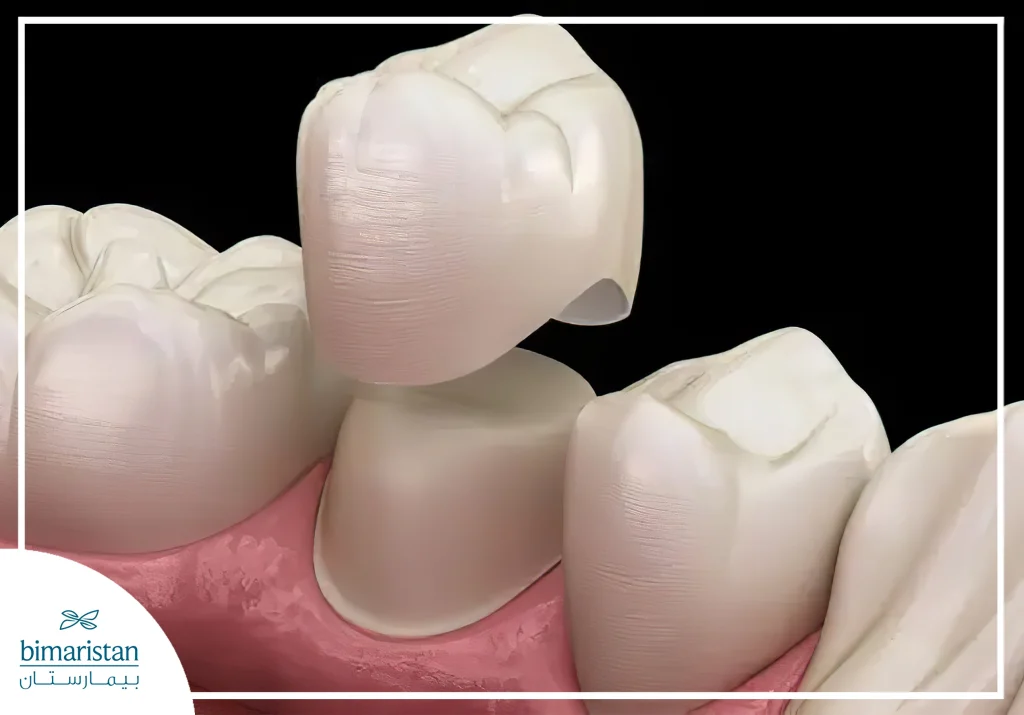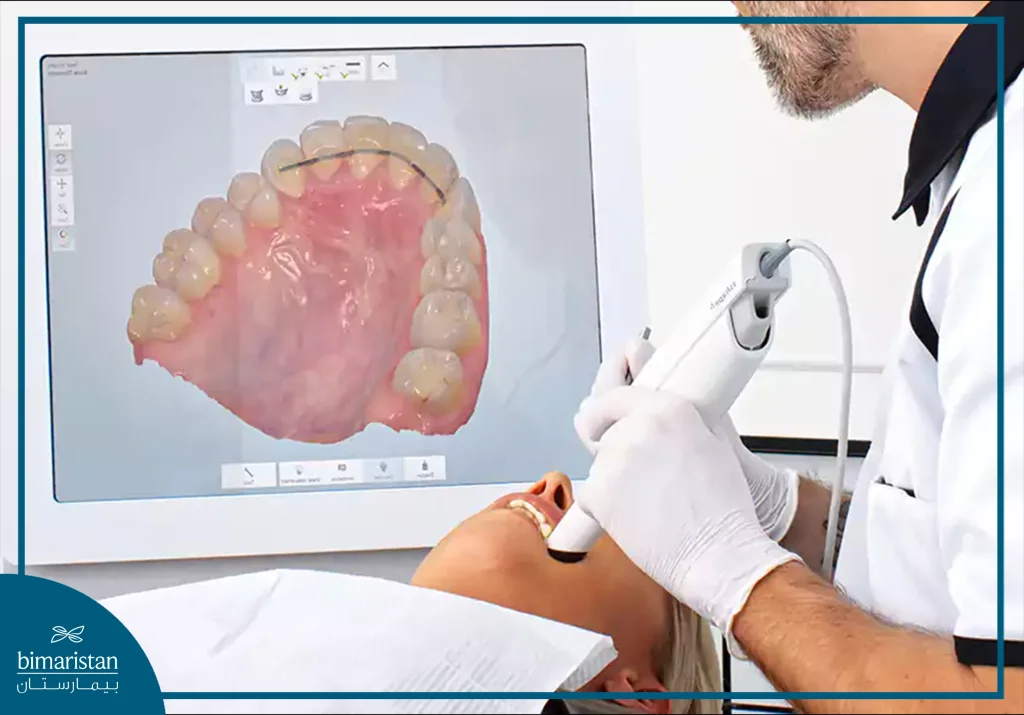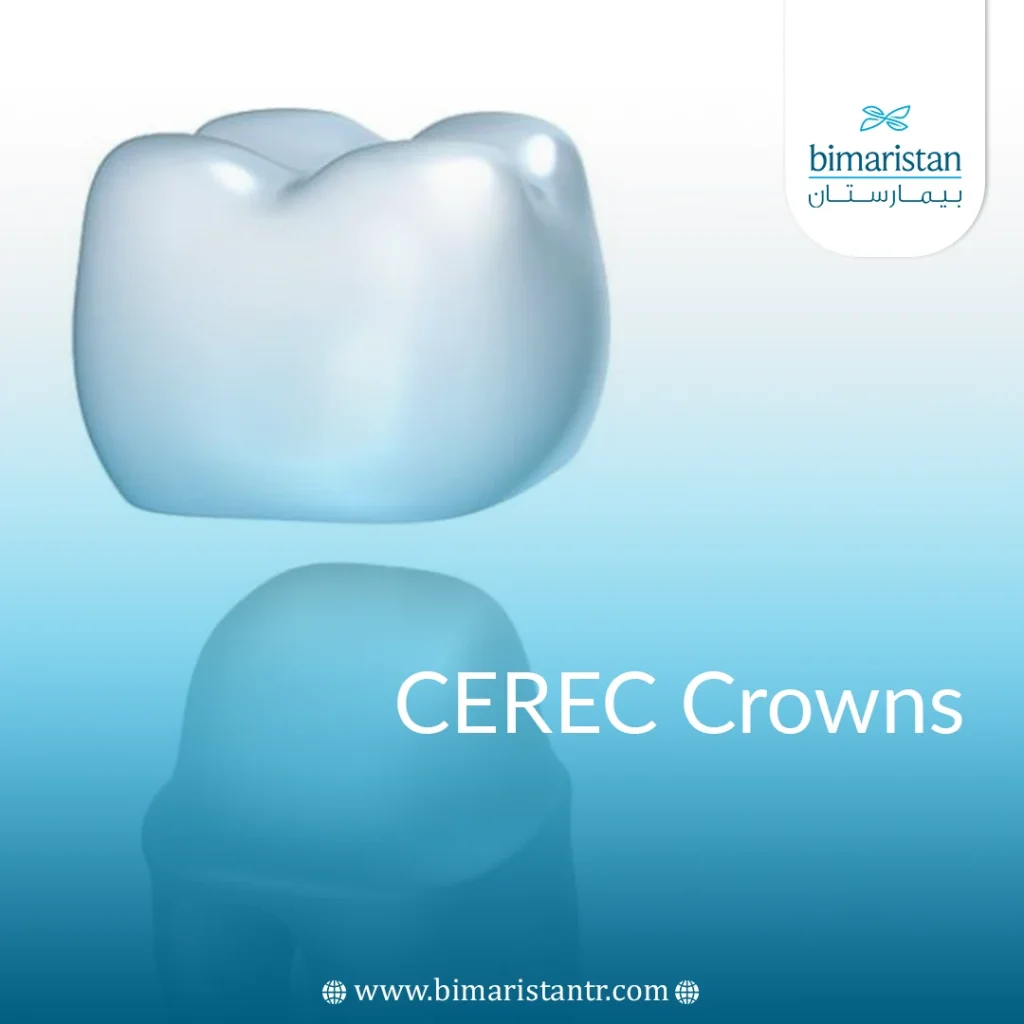In modern medical technology, 3D dental crowns are considered one of the pioneering innovations that have revolutionized dentistry. This technology relies on 3D printing to design and manufacture dental crowns with high accuracy and speed. This technology provides customized solutions that suit the needs of each patient, ensuring natural and comfortable results. In addition, this technology contributes to reducing treatment time and clinic visits, making it a preferred option for many patients and doctors alike.
What are 3D dental crowns (CEREC Crowns)?
If one of your teeth is damaged, your dentist may recommend a dental crown (crown) to address the situation.
A crown is a small tooth-shaped cover that fits your teeth.
It can hide discolored or discolored teeth and can be used in dental implants.
A crown can also protect or restore a broken or damaged tooth.
The dentist can also carry a bridge to fill the gap resulting from missing teeth.
Crowns are made of different materials, and there are several types to choose from.
The most important types are:
- Metal crowns
- Gum or resin (resin crown)
- Ceramic
- Porcelain crown
- A combination of metal and porcelain
- Zirconium crown
- Porcelain
A popular type that has seen great development in recent years is the CEREC crown. It is usually made of very strong ceramic and is designed, manufactured, and installed using a computer. This is called a 3D dental crown.
This word is composed of the letters that begin the phrase Chairside Economical Restoration of Esthetic Ceramics. You can usually get one of these crowns in a single session at the dentist.

3D Dental Crowns (Cerec Crowns – Extreme Precision in Every Step)
The difference between the modern and traditional methods is the accuracy
Accuracy is the most important thing that distinguishes Cerec crowns from traditional crowns.
Many reasons can lead to error or inaccuracy in crowns made in the laboratory.
First, there is the error caused by taking the tooth impression.
The quality of the crown depends on the accuracy of taking the impression of the tooth to be crowned, and this, in turn, depends on several factors, Including:
- The type of material used to take the impression.
- The extent of the patient’s willingness to cooperate and coordinate with the doctor.
- If we use a one-size mold designed to fit all dental impressions, this may not give the required accurate measurement.
- The amount of saliva in the mouth that can distort the impression.
- The skill of the dentist who takes the impression.
Even if everything is arranged well (often doubtful), the final result will not be as accurate and detailed as the 3D scanner that takes the images required to make Cerec crowns.
Taking the impression is just the first step, as the next step is making the model.
Unlike CEREC crowns, conventional lab-made crowns are first made by mixing the powder with water and then pouring it into the mold of the previously taken impression so that it is formed into a stone model.
In most cases, the mixture will vary, which can lead to problems reproducing the accuracy of the bite in the patient’s jaw and teeth. Furthermore, the lab technician has to pour melted wax over the stone model to form the new crown. Again, the results can vary depending on the technician’s skill in pouring the wax and making the crown.
As we can see, many processes can go wrong.
However, what about CEREC crowns and 3D dental crowns?
CEREC crowns are made to eliminate potential defects. Scanning is done with an accuracy of 1/10 of a millimeter, and the images are fed to a computer, which reproduces the crown in less than 5 minutes.
The human factor is eliminated from the manufacturing process.
Because CEREC crowns and the technology behind them are incredibly precise, they typically don’t need adjustments.
This is great for patients who need multiple crowns, as there’s no room for error.
Pros and Cons of 3D dental crowns
Pros and benefits of 3D dental crowns:
- Restores the function of your teeth immediately:
Your teeth affect your smile…how you speak and how you eat. If you have to wear a temporary crown while the lab designs the permanent crown, you have to be very careful when eating or speaking.
You even have to follow a special diet to keep the temporary crown from falling out.
This is not the case with a CEREC crown that is done in one day.
- Preventing Damage:
With traditional crowns, you have to wear a temporary crown for several days and unfortunately these crowns don’t always fit your mouth and can become loose, which can often lead to injury or other damage.
The CEREC Day Crown reduces the risk of damage by giving you the right crown after just one visit to the dentist.
In addition, CEREC crowns require less drilling into your teeth, meaning you can preserve most of your tooth.
- Save Money:
Repeated appointments and temporary crowns cost a lot of money by cutting your dental visits in half and eliminating the need for temporary crowns.
In addition, fewer visits to the dentist and less time off work means for some people more opportunities to earn money.
- Comfort:
Temporary crowns that you get with traditional procedures are made of resin and rarely fit properly, which can make them uncomfortable.
CEREC crowns are made of ceramic and fit perfectly to the tooth, making them much more comfortable.
- Prevents Decay:
Since a temporary crown sometimes falls out, it creates a cavity that leads to more decay in the tooth, a problem that is completely absent with CEREC crowns.
- More Aesthetic:
The teeth that are made with this method are completely similar to real teeth.
You can also learn about dental implants using a 3D printer or 3D clear braces.
Cons:
- Porcelain fused to metal crowns is stronger:
Cerec uses a ceramic block to design the new crown.
Traditional crowns can be made of porcelain, ceramic, metal, or porcelain fused to metal. Metal crowns are strong, as are metal and porcelain composites.
Metal bonds better to the teeth, so traditional crowns are more resistant to breakage and damage, making them more durable than Cerec crowns.
- Fragments of a broken tooth embedded in the gums:
When a part of the tooth is broken and remains in the gums, the camera does not scan these broken parts well.
In addition, a traditional crown will be more suitable in this case.
What is a Cerec veneer?
In some cases, a Cerec veneer is a suitable alternative to a crown (veneer). Unlike a crown, a veneer covers only the front of the tooth, so it may not be suitable for broken or damaged teeth. Veneers are usually made of porcelain or a resin composite.
Your dentist can also use computer-aided design tools, which are part of the CEREC process, to create a porcelain veneer for your teeth using a 3D printer to create a Hollywood Smile.
You can expect long-lasting results from CEREC veneer treatment. One reliable study found that CEREC veneers achieved a high rate of stability in people who underwent treatment with them, and they still worked well after 9 years of treatment.
Cost of 3D dental crown in Turkey
Dental veneers in Turkey may cost between $200-1500, and the cost may be much higher, depending on the type of material the veneer will be made from, its quality, and the skill of the doctor and dental laboratory.
Other types of dental crowns
CEREC crowns are certainly not your only option. You can get a crown made from a variety of other materials, including zirconia, porcelain, ceramic, metals such as gold, and resin composites, in addition to combinations of different materials.
If you do not choose Cerec, you will not be able to get your dental crown in just one visit to the dentist. Because crowns require at least two visits to the dentist.
During the first visit, the dentist will prepare the tooth that needs a crown and take an impression of it to send to the dental laboratory.
As for you, you receive a temporary crown, and then you have to return for a second visit to get your permanent dental crown. As for the Cerec crown, the patient does not need a temporary crown as the entire process is done in one visit.
Procedures and method of 3D dental crowns (Cerec crown)
Preparing the tooth for the procedure (tooth grinding before crowning)
The first step is for the doctor to prepare the tooth, where the dentist removes the decayed or damaged parts of the tooth and redesigns it to hold the crown.
For traditional crowns, the doctor usually peels and removes more than 70% of the healthy tooth structure.
Cerec crowns do not remove much of the healthy tooth structure (i.e., the tooth is not ground before crowning except in a very small way).
Taking the impression (imaging stage)

The patient is often anxious about the process of taking the impression in the doctor’s office, as the putty-like material placed in the impression molds can cause the patient to gag.
Fortunately, the doctors in our centers use digital impressions or images in the case of Cerec crowns.
The doctor uses a small camera (called CAD cam scanner) that photographs and scans the patient’s teeth in three dimensions, which is more comfortable than the traditional method.
Crown Manufacturing
The doctor makes the crown quickly using a computer (computer), where the digital impression is passed to a computer, and the doctor reviews the impressions and designs a model that resembles the natural tooth and chooses the appropriate color for the crown so that it matches the color of the rest of the teeth.
Crown Manufacturing
Dentists who install Cerec crowns have machines (printing machines) in their clinics that grind the ceramic blocks, a process that usually takes about 15 minutes.
Although this process is fast, it is accurate.
Crown installation
The doctor takes the crown from the grinding machine and polishes it, then compares it to the patient’s teeth to make sure it matches them.
Then, he checks the suitability of the crown for the tooth and fixes it in place.
Then, the doctor gives the patient post-operative care instructions.
Studies on the 3D dental crown process
There are many studies that talk about more beautiful results that are closer to realistic teeth in a shorter period of time.
Sources:
